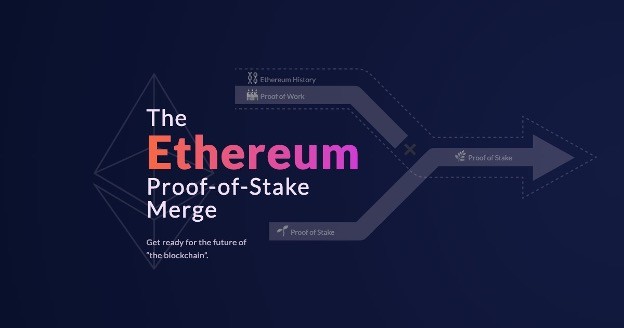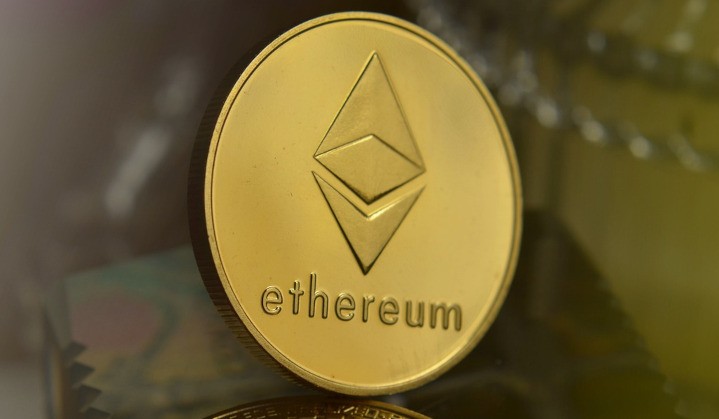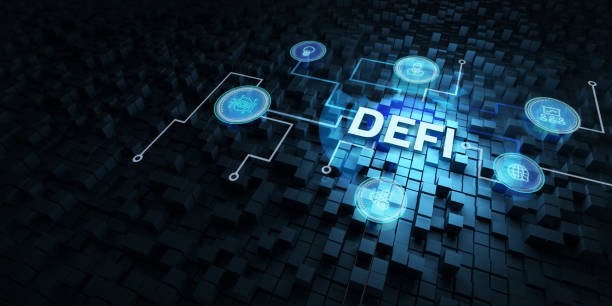What is the Ethereum Merge and Why Should Anyone Care?
Jun 10, 2022, 8:16pm
There’s been an exciting development happening this year within the cryptocurrency community and specifically with Ethereum.
In March of 2021, Vitalik Buterin announced that he would be implementing a new system called “Proof-of-stake” into Ethereum’s code for its next big update, dubbed “the merge.” The merge has already begun with certain nodes running on PoS, but it won’t fully launch until 2022 at least.
So what exactly are we talking about here and why should anyone care?
What is the Ethereum Merge?
As mentioned above, there is currently no official name given to the upgrade or even any concrete timeline of when these changes will take place. However, several people have proposed names such as “Phase Zero,” which refers to the current state of Ethereum where miners can still run their own validators by using energy resources like electricity and graphics cards. This means instead of hashing blocks by solving complex mathematical problems, validator nodes verify transactions by keeping track of balances across multiple blockchains.
In comparison to Bitcoin, whose network uses mining via PoW mechanisms, Ethereum is known for being much slower due to how long it takes to confirm each transaction.
However, some argue that the slow speed of Ethereum also allows for more freedom and opportunities to use smart contracts because they’re not waiting days for confirmation before sending money around the globe. And while many developers may disagree, it seems that Ethereum could benefit greatly from switching over to PoS so that users don’t need to wait hours for transactions to go through.
Another reason behind the switch is simply security concerns. Because the entire network does not rely solely on PoW consensus methods anymore, hackers cannot easily attack individual wallets without having access to a large amount of computing power. Instead, attackers must compromise hundreds of thousands of validating machines at once in order to successfully hack or steal funds.
Furthermore, if a hacker were able to perform 51% attacks against validators, they would theoretically be able to control the majority of tokens staked onto them, essentially owning the network itself. Since every node keeps a copy of everything stored on the chain, if someone controls enough of those copies, then you’ve got yourself a distributed denial of service attack (DDoS).
When the first phase finally launches, however, the main focus will likely be on increasing scalability. So far, the Ethereum platform hasn’t really seen too much growth outside of decentralized finance applications and dApps. When compared to other cryptocurrencies like Litecoin who have surpassed billions of dollars worth of market cap recently, Ethereum barely scrapes up 5 percent market share. While this isn’t necessarily bad, it doesn’t make sense considering that its technology was designed to scale better than anything else out there. With the implementation of PoS, Ethereum aims to solve this issue head-on.
This brings us back to Phase 0, the current stage of Ethereum right now…
Ethereum is now transitioning from Proof-of-Work (PoW) to Proof-of-Stake (PoS)
For context, PoW systems work by employing computer hardware like GPUs and ASIC devices to generate hashes which are used to create new blocks on chains. Once a hash passes validation checks, it creates a new block that gets added to the chain forever. These types of algorithms aren’t very efficient since it requires massive amounts of processing time and energy just to validate one single block. As a result, Ethereum has become incredibly inefficient for larger DApp networks that require fast transaction times.
On the flip side, PoS protocols aim to fix these issues by utilizing native token assets rather than actual computational processes. For example, tokens generated during different phases of the validation process can be swapped between validators depending on whether they meet certain criteria. Users only stake ETH/ERC20 tokens based on how often they wish to participate in validations.
Instead, validators can earn rewards that incentivize them to keep the network secure. Not only do validators get paid for holding tokens, but they’ll receive additional compensation for participating in validation tasks. What makes things interesting is that validators do not directly compete against each other anymore either. Instead, they can choose to participate in validations whenever they want and decide how much effort they put into doing so. It’s similar to betting your winnings after winning the lottery. You might bet less on a game show, knowing that you’d probably lose anyway.
It’s important to note that we haven’t yet reached full adoption of this model. According to statistics published earlier this month, only 1.5 percent of total addresses exist on PoS platforms as opposed to 99.5 percent on PoW networks. There are two reasons for this disparity—firstly, most private ICO investors prefer investing in PoW systems since they offer higher returns. Secondly, because PoS systems utilize ETH tokens as collateral, owners tend to sell off their holdings immediately upon earning interest payments. On the contrary, individuals on PoW platforms invest their earnings back into purchasing expensive equipment required to mine coins.
But despite recent setbacks, it appears that Ethereum is determined to move forward with upgrading its infrastructure. Speaking with Cointelegraph, Vlad Zamfir, cofounder of Prysm, said that he believes Ethereum’s transition towards adopting PoS will eventually lead to greater transparency and efficiency. He explained that, “a lot of people believe that [PoS] is going to help improve governance, reduce centralization risks, increase privacy, etc.,” adding that, “all good stuff!”
Prysm, along with Cosmos’ Tendermint protocol, are among the few projects working hard to develop viable alternatives to Ethereum. Other notable examples include Cardano, EOS, Lisk, Polygon Chain, Zilliqa, Polkadot, Algorand, Binance SmartChain, Hashgraph, Avalanche, Tezos, Interchain, Terra, Orchid, Solana, SiaCoin, Helium, StorjX, Aethereum Classic, and Substratum Protocol.
According to Joseph Lubin, founder of Consensys and Co-Founder of Ethereum, the upcoming change will allow Ethereum to operate more efficiently and securely as well as provide faster speeds for smaller DApps. Furthermore, Lubin stated:
“[T]he biggest challenge facing today’s web is scaling & interoperability — both of which Ethereum excels at. We plan to continue focusing our efforts around making Ethereum faster, cheaper, and more accessible to everyone.”
Lubin went further speaking with CNBC saying that:
…we see ourselves as the best way to achieve true global digital ownership. We think this vision will come true as soon as possible, especially as we begin rolling out the migration toward sharding and moving away from our old data structure that we built 10 years ago. That’s what I mean by ‘transitioning.’
And although the exact details surrounding the merge remain unclear, it certainly sounds promising. After all, there’s lots of room for improvement with regards to building scalable solutions that can handle millions of daily active users. Also, the fact that Ethereum is looking to adopt standards set forth by other leading cryptos such as Ripple and Stellar shows that the project is taking steps to ensure sustainability and compatibility.
One thing is clear though, the community is excited about the potential upgrades that await them. During his interview with CNBC, Lubin expressed excitement regarding the future possibilities that lie ahead for the blockchain space in general. He explained that, “I’m super excited about this technological advancement, and look forward to seeing the results for the whole ecosystem.”
What is the Merge in Cryptocurrency?
You may wonder how exactly this upgrade will affect existing token holders. Well, technically nothing happens unless a user decides to swap tokens themselves. Only those willing to exchange tokens will experience differences in performance. At present, the vast majority of tokens are locked in cold storage accounts, meaning that they haven’t moved throughout various stages of the network. Even worse, some holders may never touch their tokens ever again.
If you hold tokens on Ethereum’s mainnet, you’ll automatically be transitioned to a newer version of the blockchain. Then again, it’s entirely optional to move to a newer version. Just because you own a token doesn’t automatically qualify you to reap benefits associated with the new rulesets.
To understand how the merge works, let’s break down the three primary components involved:
- Validators – People who maintain the integrity of the network. They vote on proposals submitted by others.
- Proposals – Voting procedures that determine what updates occur on the network.
- Block production – Blocks contain information pertaining to specific transactions on the blockchain.
During normal circumstances, the entire network operates under a hybrid model wherein PoW and PoS function simultaneously. To prevent malicious activity, miners are randomly selected to produce blocks. Miners who contribute significantly more votes than average gain priority and produce blocks first. Afterward, validators are chosen to approve or reject newly produced blocks. Finally, voters are responsible for choosing candidates to propose new rule sets. This random selection prevents centralized authorities from controlling voting outcomes. Nowadays, Ethereum utilizes a dual-layer architecture. Layer One handles basic operations including block creation, gas fees, etc. Whereas, Layer Two deals exclusively with proposing new rules and determining optimal conditions for validators that govern the overall network. By separating these layers, the system becomes infinitely more resilient.





